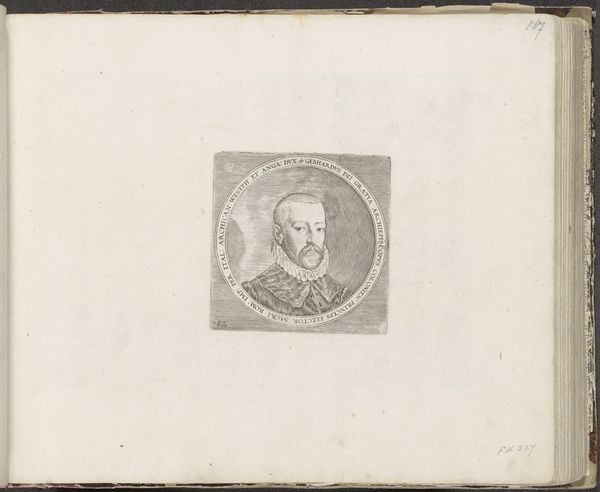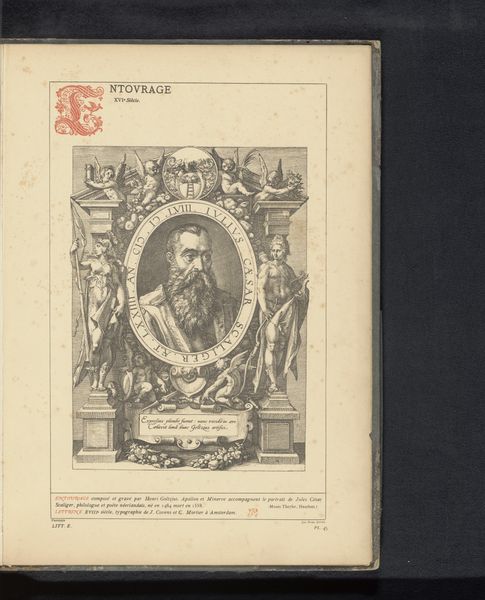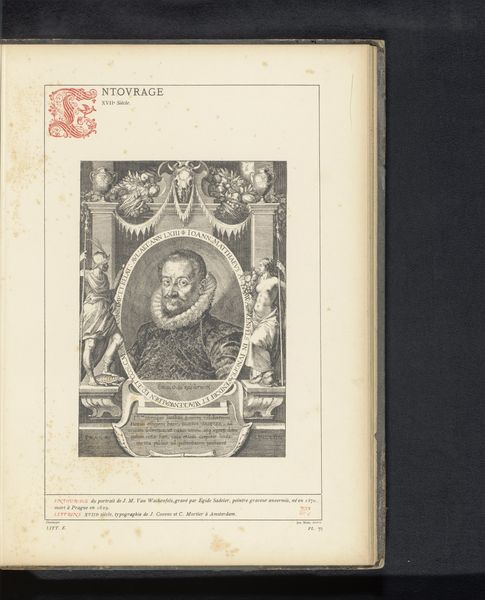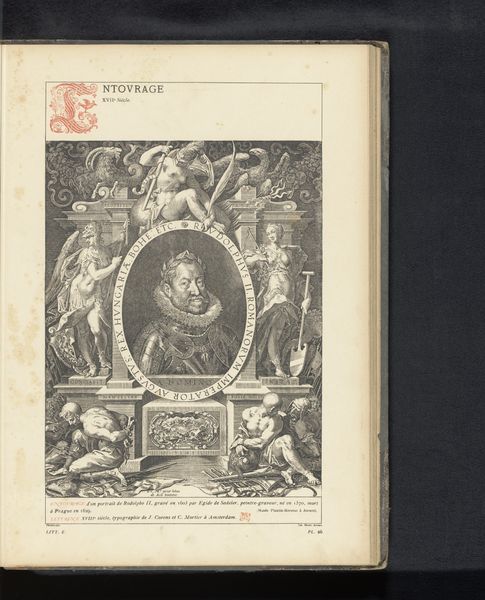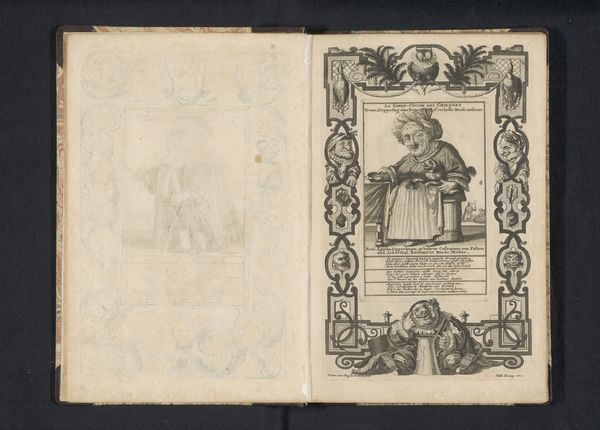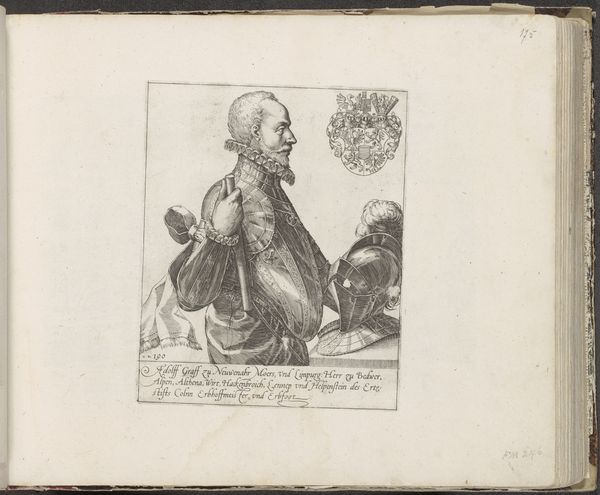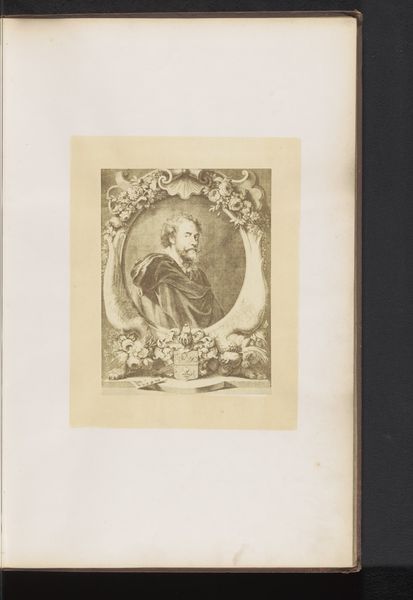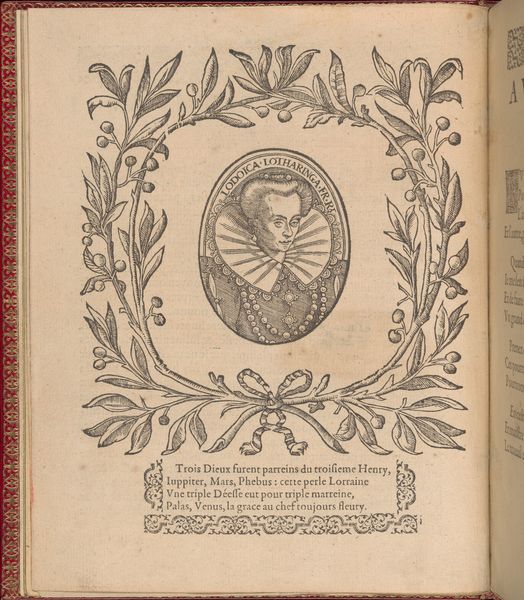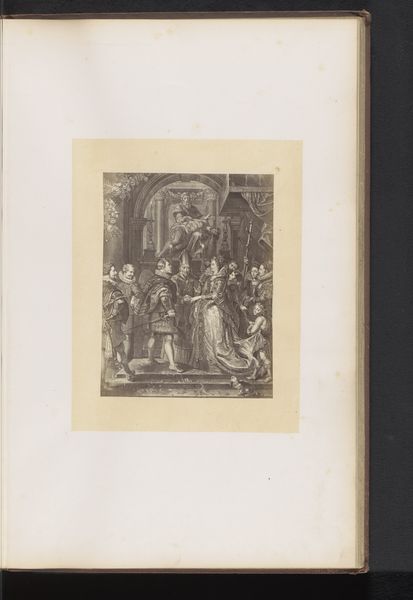
Portret en executie van Charles de Gontault, hertog van Biron, 1602 1602 - 1604
0:00
0:00
print, engraving
#
portrait
#
medieval
# print
#
history-painting
#
northern-renaissance
#
engraving
Dimensions: height 181 mm, width 190 mm
Copyright: Rijks Museum: Open Domain
Curator: This engraving, currently housed in the Rijksmuseum, is titled "Portret en executie van Charles de Gontault, hertog van Biron, 1602" and was created between 1602 and 1604 by Frans Hogenberg. It's a complex print, wouldn't you say? Editor: Definitely complex. The stark black and white contrasts create a sense of drama, almost like a newsreel of the period. The composition, with its central portrait framed by smaller scenes, feels very deliberate. Curator: Precisely. Hogenberg uses the engraving medium to document not only the likeness of Charles de Gontault, but also key moments surrounding his execution. Notice the lower circular vignettes? One depicts his arrest, the other his actual execution. Editor: The starkness in these engravings really speaks to the difficult socio-political climate of the time. The portrait shows the Duke adorned in garb which are signs of status, yet are undermined by the tragic fate displayed alongside it. Curator: Exactly. The northern Renaissance valued detailed representation and conveying complex narratives through print. Engravings allowed for mass production and dissemination of information and perspectives on this moment of conflict. This speaks directly to labor value too; multiple hands would've been involved. Editor: Looking closely, you can see Hogenberg's skillful use of line and cross-hatching to create tonal variations. It's interesting how the texture and physical marks evoke an atmosphere of tension and solemnity. Curator: Consider also the text framing the central image. While now mostly illegible, it provided additional context and commentary for contemporary viewers. Prints like these were powerful tools in shaping public opinion during the period. The artist using readily available, though specialized, tools to transmit vital political information is just so significant. Editor: Yes, this reminds us of the artwork’s ability to freeze a specific moment in history. And in a way, memorialize it. Curator: Agreed. Studying "Portret en executie van Charles de Gontault, hertog van Biron, 1602" reminds us how closely linked the development of mass media was with pivotal historical events. Editor: And from a visual standpoint, it highlights the enduring power of stark imagery to convey strong emotions, even centuries later.
Comments
No comments
Be the first to comment and join the conversation on the ultimate creative platform.
